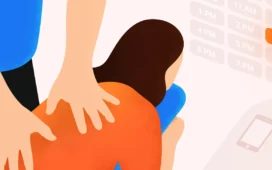The patent world is a complex one with which most people are unfamiliar. This makes it easy for several myths to persist, even in an age where reliable information is readily available.
Four of the most common myths surrounding patents are dispelled below. Of course, the best way to gain a better understanding of patents and the laws behind them is to speak with a qualified patent attorney.
Myth One: Provisional Patents
The term “provisional patent” gets tossed around with alarming carelessness. In reality, an update to U.S. patent law in 1994 made it possible to file a “provisional patent application.” The word “application” is critical.
That’s because there is no such thing as a “provisional patent.” Instead, inventors may file a provisional patent application, which is less formal than a non-provisional patent application. Provisional applications do not require a claim, and they are never reviewed by examiners at the U.S. Patent and Trademark Office, or USPTO. These applications provide the inventor with the ability to establish an earlier effective filing date and to describe their invention as “patent pending.”
For 12 months, the provisional patent application remains pending. It automatically expires at the end of this period. If the inventor wishes to maintain their earlier filing date, then they must file a non-provisional patent application prior to the expiration of the provisional application.
Myth Two: A Single Patent Provides Worldwide Protection
This one is difficult to dispel. However, it’s critical that inventors understand that obtaining a patent in one country is not the same thing as protecting their rights worldwide. Each country establishes its laws and guidelines with respect to patents. Accordingly, obtaining a U.S. patent grants rights in America and its territories. If the inventor wants to protect their patent in China or Brazil, then they must file a patent application in these countries.
Filing patent applications around the world is an expensive and unrealistic prospect. This means that inventors must pick and choose where they would like to have protection. With increasing frequency, inventors are choosing to file patent applications in China as that nation has a reputation for manufacturing copycat products. Owning a Chinese patent on an invention may give the inventor the enhanced ability to prevent such infringement.
Filing a Patent Cooperation Treaty, or PCT, application makes filing in various countries easier and less expensive. This may be a viable option for many inventors who need to protect their product in more than one nation.
Myth Three: Ideas Are Patentable
The USPTO defines patentable subject matter as being machines, processes, compositions of matter and articles of manufacture. Accordingly, people who wish to protect an idea with a patent are out of luck. The USPTO has determined that mental processes, laws of nature, abstract ideas, mathematical algorithms and natural phenomena are not patentable subject matter.
Of course, most inventions begin with a great idea. If the idea eventually transforms into a product or process, then it may be possible to obtain patent protection.
Myth Four: The Inventor Can Withhold Details of Their Invention
Inventors may like the idea of keeping some portion of their invention a secret. The assumption is that by leaving out a “secret ingredient,” their competitors won’t be able to copy them.
Unfortunately, U.S. patent law demands that applications include a detailed description and the best mode of using or making the invention. This means that nothing can be held back. Keep in mind that a patent is essentially an exchange. The government gives the inventor the right to exclude others from using their invention for a certain period of time while the inventor discloses even the smallest details of their product or process so that it may be used by others upon the expiration of the patent.
Author: Jeff Williams
Jeff Williams is an experienced mechanical engineer and lawyer that consults closely with clients in a straightforward and clear manner. He brings a particular set of strengths and unique perspectives to the firm Texas Patent Attorney.
Jeff received a B.S. in Mechanical Engineering from Arizona State University in 2005. He was an engineer for a number of years at a number of large corporations before pursuing his law degree. He graduated from Texas A&M University School of Law (formerly Texas Wesleyan University School of Law) with a J.D. in 2010. By combining his education and prior work experience into the field of intellectual property law, Jeff has developed key skills to fully assist clients.







